MW2014a

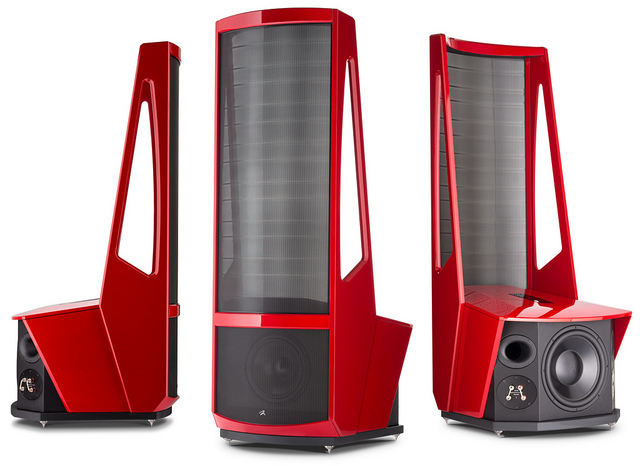
Martin Logan Neolith Loudspeaker ($80,000): This latest offering from Martin Logan is a flat out stunner, musically and physically. The Neolith’s huge (48” x 22”) XStat™ CLS™ electrostatic transducer is bolstered by 12” front-firing and 15” rear-firing woofers. And with a sensitivity of 90dB they can be driven by almost anything. I spent an afternoon with them at their unveiling at Audio Video Interiors in Oak Brook Terrace, Illinois and haven’t been right since. They render an expansive but extremely well detailed soundstage, and manage to do so at impressive listening levels without dominating the room or listener. And as a kicker, they also come in a delicious”Rosso Fuoco” red. This is a high-end speaker in every sense of the word. (Dave Thomas)

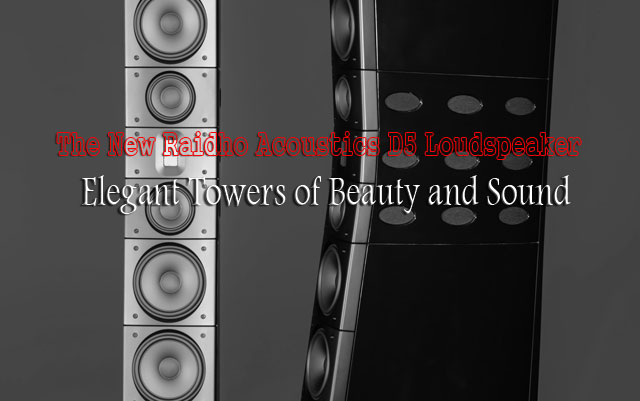
Raidho Acoustics D5 Loudspeaker ($220,000): After having the privilege of spending the past several months enjoying the merits of a pair of beautiful, sleek Raidho D5 loudspeakers in my living room I can only marvel at the level of listening joy they have provided. Uber-expensive audio products don’t often meet one’s expectations. Fortunately for me they have exceeded mine. After listening to many of my eclectic music tracks, I soon realized that Raidho’s D5 loudspeaker significantly raised the bar for the current state of the art in high-end loudspeakers (reviewed here). (Dan Secula)

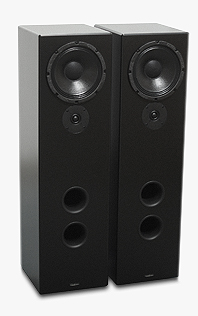
Tekton Lore Reference ($799.00): Eric Alexander doesn’t always drink beer- and when he does- I have no idea what brand he prefers. No matter. To me, he is quite simply The Most Interesting Speaker Designer in The World. As I understand it, some of the technology in the brand new Lore Reference is still as hush-hush (and maybe patent pending) as the dark methods Eric employs in wringing out bespoke level speaker performance from guitar-amp-inspired ‘blue collar’ parts. He did it for me- and damn well- with the smaller M-Lore, and the new Lore Reference is again an absolute benchmark in speaker performance at its price point and undoubtedly well beyond. (David Abramson)

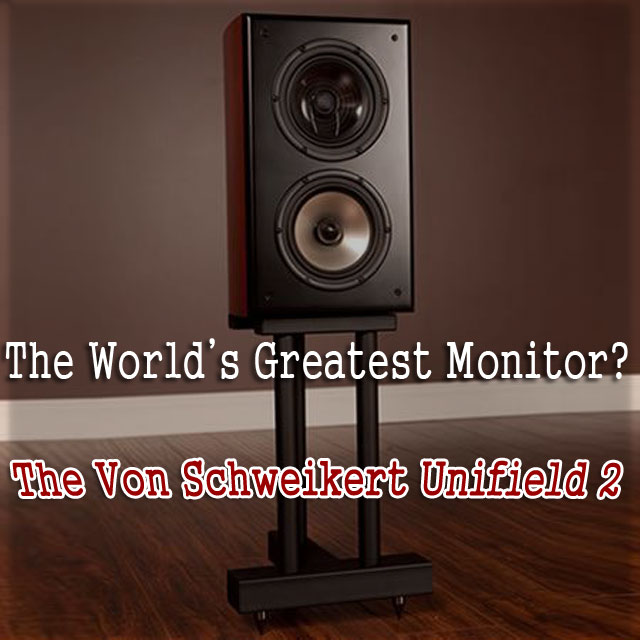
Von Schweikert Audio Unifield Two Mk II loudspeaker ($7,995)
Surprised by how “live” this handsome transducer sounds especially when paired with G9 Audio. I said it in the review and I’ll say it again, this might be Albert Von Schweikert’s most remarkable design to date (reviewed here). (Clement Perry)


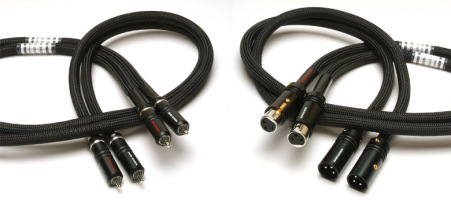
Acoustic Revive’s Triple-C Finemet Interconnects and Triple-C SPC Reference Speaker Cables
RCA-1.0 Triple-C Finemet Single-Core Line Cables, $2475/meter; $815 additional half-meter: Acoustic Revive’s Triple-C Finemet:interconnects and Reference Triple-C speaker cables have replaced Nordost’s original Valhalla interconnects and Tyr speaker cables. Time after time, nothing compared with Nordost, including – as good as they are – earlier Acoustic Revives. The Valhallas’ transparency, resolution and detail are legend. The Triple-C cables work their magic by diverting one’s awareness to flat-out tactility.
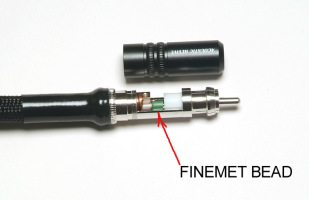
I suspect that metallurgy accounts for the difference. Triple-C (Continuous Crystal Construction) involves an elaborate process. It’s been compared to the blade of a Samurai sword, which I take to mean a Damascene process of successive foldings. For business reasons, Furukawa ceased manufacturing PCOCC (the Ohno Continuous Casting method, i.e., long crystal) 4N-grade copper wire.
One of PCOCC’s original developers took the process a step beyond. Triple-C copper, also 4N-grade, i.e., of 99.996 purity, is fabricated in such a way that alien substances of 20 microns or more are removed, which permits the wire to be drawn to a10-micron thinness for specialized applications. (A human hair is a good deal thicker.) In terms of audio, Triple-C presents a dielectric constant of 101.5 IACS%, along with its capacity for absorbing vibration by way of its millefeuille structure (think of phyllo pastry). For further information, www.fc-m.co.jp
Finemet beads, a Hitachi development exclusive in audio to AR Tripe-C interconnects, are noise-and-vibration-reduction devices. For information, see page 27 (here). Finemet beads sit at the three pins of my review pair’s XLR’s connectors. For descriptions and illustrations,www.nc-audio.com/arevspeak.htm.
Together, the cables’ sense of presence delights: seemingly limitless highs of exemplary purity, an abundantly detailed, harmonically rich midrange and remarkably well-disciplined lows that somewhat surprise given the speaker cable’s relatively slender single-core wire. It puts to the lie as effectively as anything I’ve heard that you need stout conductors to deliver effective bass. With respect to these cables, Gertrude Stein’s “There’s no there there” might well be paraphrased as “There’s a world of there there.”

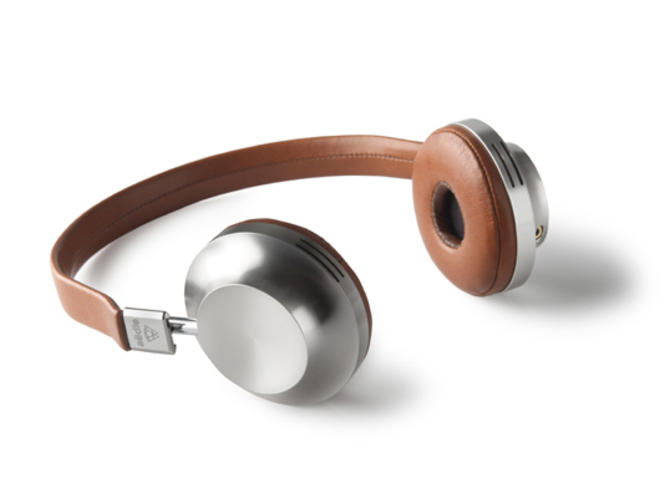
Aёdle VK-1 Headphones ($499.00): Thanks to these lovely French headphones, the best parts of my day are the mile long walks to and from the train station when I simply plug them into my iPhone and listen to hi-rez music downloads. They combine Titanium Neodymium transducers with Aramid fiber-coated detachable cable and military grade aluminum construction with gorgeous lambskin leather to create one of the most beautifully built and natural sounding headphones I’ve heard. They easily replaced my Bowers & Wilkins P5s, and that’s saying something. (Dave Thomas)

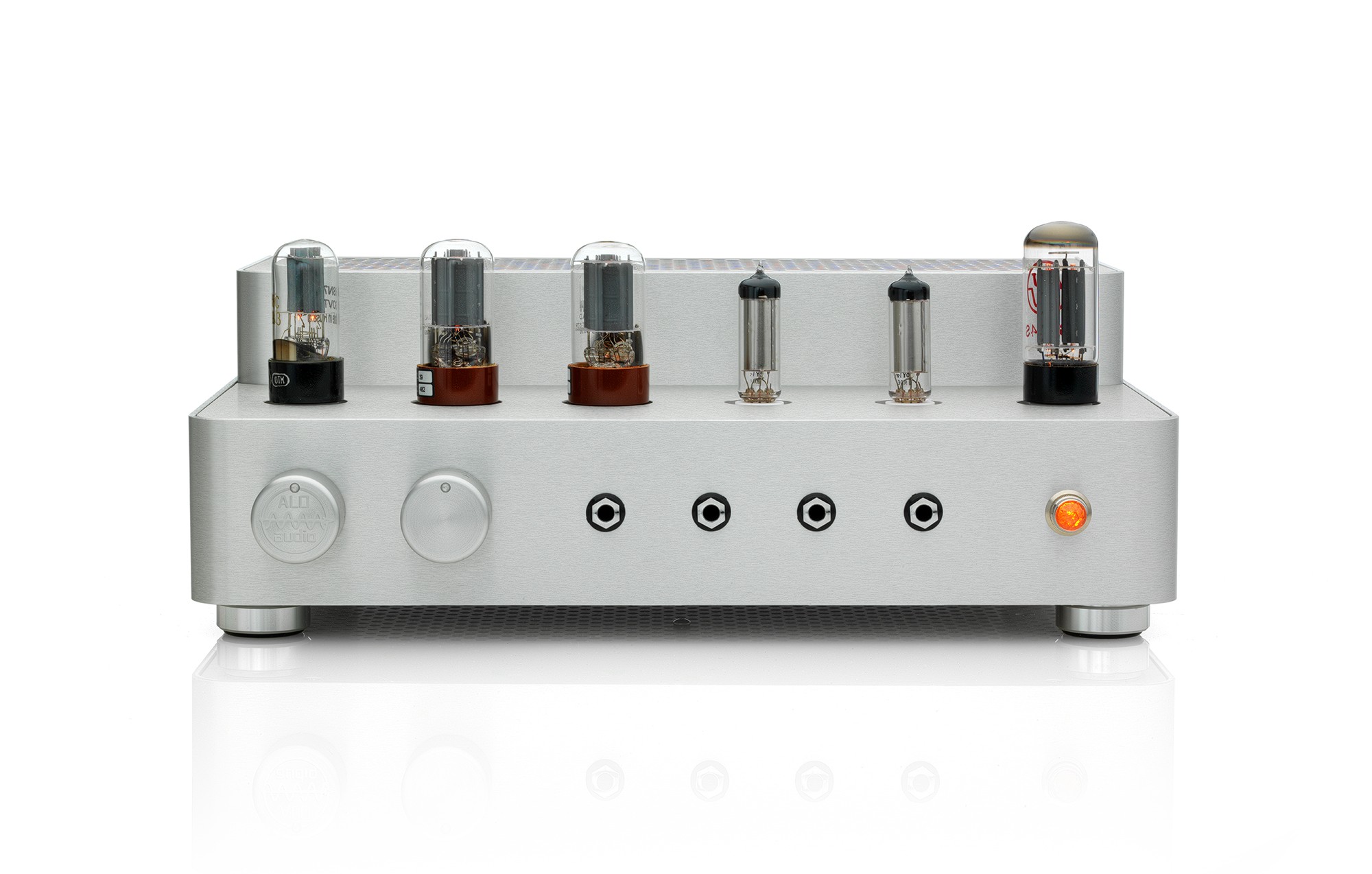
ALO Studio Six Headphone Amplifier ($3,900): As big and heavy as a solid integrated amplifier, ALO’s Studio Six does one thing well; very very well. And it does for up to four people at a time (or enables one lucky headmaniac to roll around in his own small pile of up to four top-flight headphones at once). In skiing, it’s not just being able to get down an expert slope; it’s being able to ski that slope with panache. In this vein, the ALO Studio Six doesn’t just get down the mountain; it carves sweeping, graceful turns and beats you to the ski lodge where you find it shaggy-booted feet up in front of the fireplace sipping a dry martini with pricey gin. Yep- the very bestest over-the-top device for headphone listening I’ve yet to encounter. (reviewed here) (David Abramson)


Audience Adept Response aR2-TS ($2,495) and aR6-TS ($4,995):
These latest Adept Response products produce such a silky and genuinely musical appreciation to whatever system they’re in. I am utterly surprised at how much they “get out of the way” and allow the music through. (review in the works) [Clement Perry].

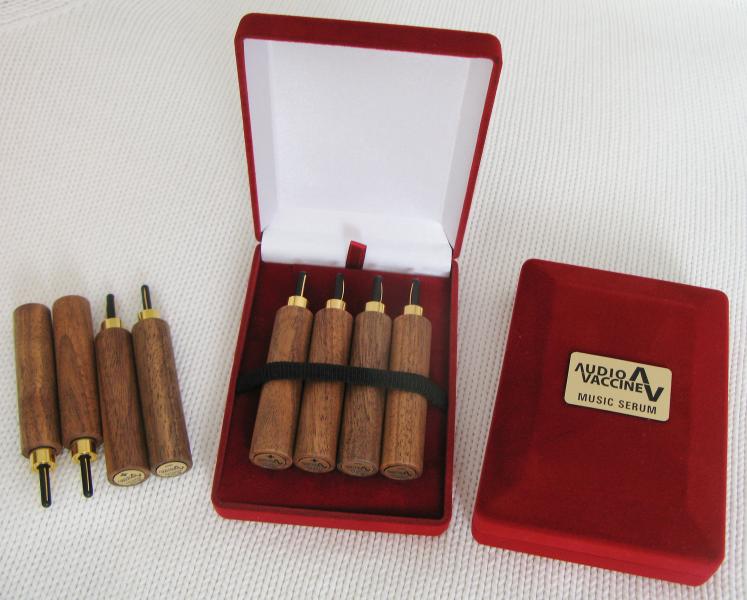
Audio Vaccine Music Serum: ($899 per set)
Miniature Bybee-like devices employ banana connectors to fit both the loudspeaker and amplifier posts. Music Serum’s designer Igor Macek is the consummate music lover who hoped I would like his invention. Well, the results, even after a short audition had me doing a double-take. Greater delineation of notes, deeper and more focused soundstage. In short, the Music Serum has impacted my appreciation on what a mere tweak can do. Review in the works (Clement Perry)

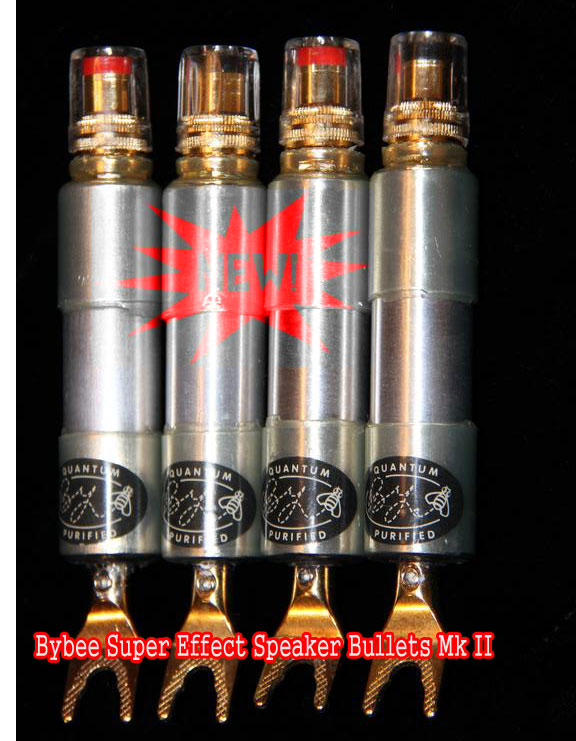
Bybee Technologies Super Effect Speaker Bullets Mk II ($5,400):
Been using this device since 2001 and am wondering every time I take them out to see if my system has outgrown their use, they go right back in. The latest iteration allows for a sense of quiet, musicality and low end authority that is without rival (reviewed here) [Clement Perry].

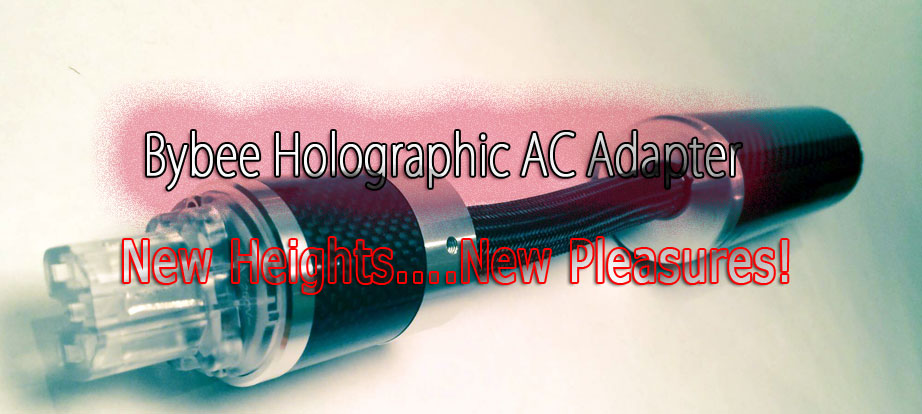
Bybee Holographic AC Adapter ($1,999):
Adds greater vibrancy and musical vitality to any AC powercord they’re used in conjunction with: from Bybee’s very own to the best AC I’ve ever encountered in the Gobel Lacorde Statement AC cord (reviewed here). [Clement Perry]

 Bybee ‘Crystal Series’ AC Power Cord ($1,499): Something is obviously going on in AC power cords that audiophiles are willing to pay hundreds, even thousands to obtain. Proffered explanations of that “something” vary both in theory and believability. Jack Bybee, who is far more qualified than most to speculate about quantum mechanics—that seemingly inevitable, ubiquitous catch-phrase of advertising departments—has created a cord based on an exciting and ingenious theory. But even more exciting than its theory of operation is its effect on reproduced music, which truly must be heard to be believed. (reviewed here) (Russell Lichter)
Bybee ‘Crystal Series’ AC Power Cord ($1,499): Something is obviously going on in AC power cords that audiophiles are willing to pay hundreds, even thousands to obtain. Proffered explanations of that “something” vary both in theory and believability. Jack Bybee, who is far more qualified than most to speculate about quantum mechanics—that seemingly inevitable, ubiquitous catch-phrase of advertising departments—has created a cord based on an exciting and ingenious theory. But even more exciting than its theory of operation is its effect on reproduced music, which truly must be heard to be believed. (reviewed here) (Russell Lichter)
Jack Bybee in my opinion is the master at building affordable noise reduction AC Power Cords that outperform AC cords way above their weight and asking price. I have not been without some form of Bybee in my system since I decided to take the plunge in high end audio. My present system consists of the new Bybee Bullets and his limited addition Bybee Curl Holographic AC Conditioner. I consider the Bybee Crystal Series AC Power Cord the best of the trio due to its affordable cost and obvious sonic performance. This AC cord offers many of the sonic accolades mentioned in the Bybee bullets and AC conditioner. (Moreno Mitchell)

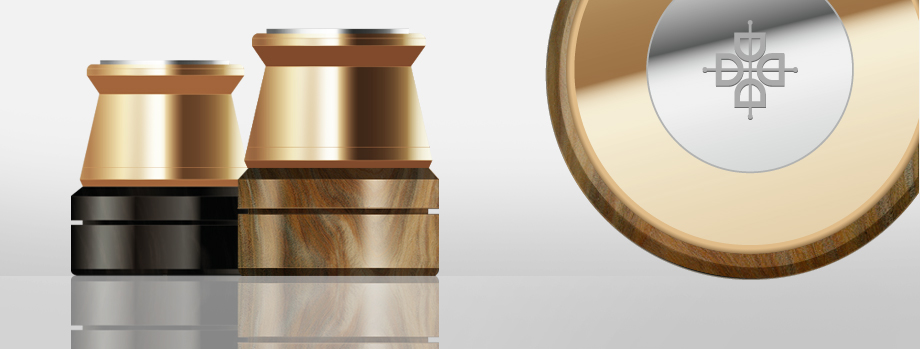 Dalby D7-Vinyl Stabiliser ($6,380): Yes, this is ridiculously expensive but it is ridiculously better than other record weights, clamps, etc. It uses “lignum vitae” wood, which some may know as Guayacan, the most dense wood and grown in South American and adds 3 pounds of solid brass with 9 carat gold flash covering it. I have not heard anything that rivals it. It is recommended for non-suspended turntables probably because of its weight. I have it on a 100 pound turntable. (Norm Luttbeg)
Dalby D7-Vinyl Stabiliser ($6,380): Yes, this is ridiculously expensive but it is ridiculously better than other record weights, clamps, etc. It uses “lignum vitae” wood, which some may know as Guayacan, the most dense wood and grown in South American and adds 3 pounds of solid brass with 9 carat gold flash covering it. I have not heard anything that rivals it. It is recommended for non-suspended turntables probably because of its weight. I have it on a 100 pound turntable. (Norm Luttbeg)

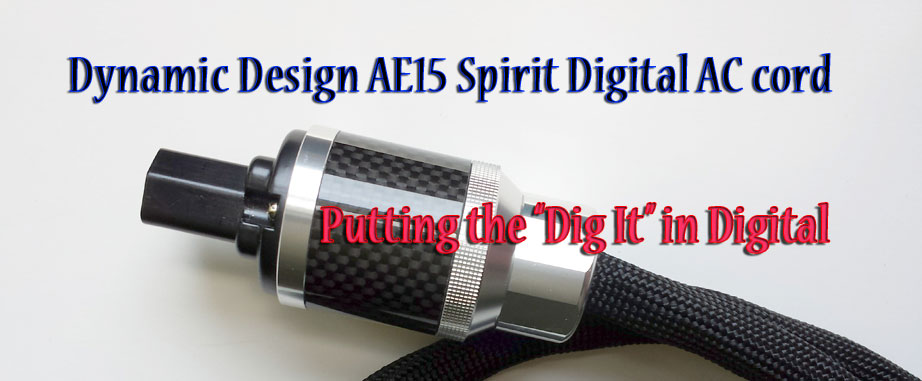
Dynamic Design AE15 Spirit Digital Power Cord ($1,200/1.5M): Admittedly my expectations weren’t very high when this cord arrived, but I was pleasantly surprised at the impact that it had when I attached it to my Vitus Audio RD-101 DAC/Linestage. Deeper bass and better image focus for digital-based systems were the biggest improvements that I noticed. It is nicely constructed cord and very easy to work with. At a price of $1,200 it’s hardly cheap, but it’s definitely worth the dough if you’ve made a significant investment in digital components. They deserve a cord like this. (reviewed here) (Dave Thomas)

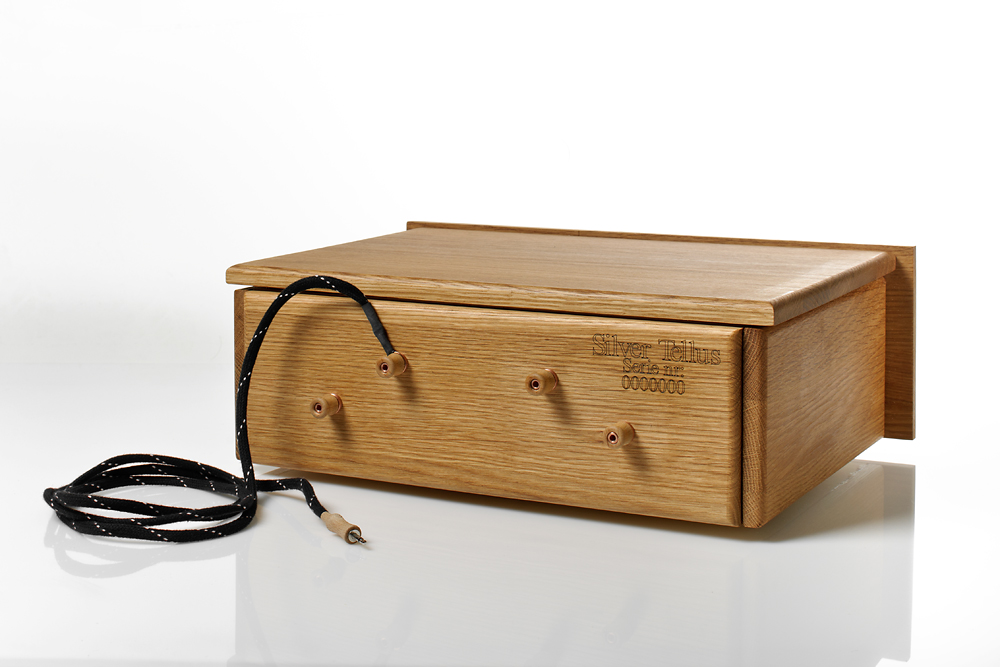 Entreq Silver Tellus Grounding Box ($2,699):
Entreq Silver Tellus Grounding Box ($2,699):I first learned about Entreq products when I received a call from Clement Perry about 3 years ago. He kindly sent me a set of Entreq jumper cables with specially-made speak-on connectors to audition in place of the Sunny cable speak-on connectors. The improvements were astonishing; it was hard to believe that these very light and ordinary cables were capable of delivering such a huge improvement over a manufacturer’s specific type cable designed for his very own speaker. After reading Dave Thomas’ review on these Swedish-built speaker cables, I became more interested in the Entreq brand and their new grounding devices to be more specific. I decided to audition the Entreq Silver Tellus Grounding Box when the opportunity presented itself. The Entreq Silver Tellus Grounding Box works on the grounding aspect of your system components and has provided for me an improved reduction in noise and grunge. Also greater dynamics shadings are descernible. In fact, I think the Entreq Silver Tellus Grounding Box is one of the best additions to my system in years. Full review in the works. (Moreno Mitchell)

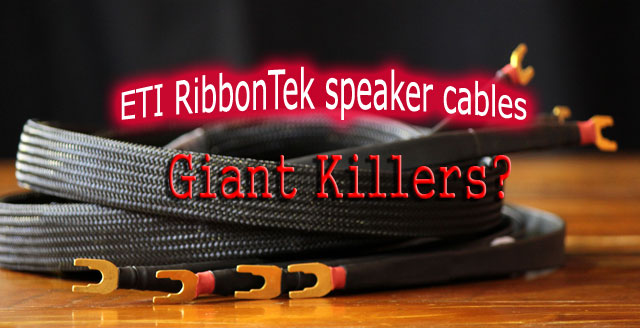
ETI Audio RibbonTek Speaker Cables
The ETI Audio RibbonTek Speaker Cables, priced at $700/2.5 meter pair are available terminated in both gold plated spade and bayonet styles. One listen will tell you that these are very responsive cables, capable of presenting great pacing and dynamic contrasts. They appeared to render both macro and micro detail with ease without congestion during my testing. ETI’s RibbonTek speaker cables offer a great value and may indeed be giant killers. (reviewed here) (Greg Voth)

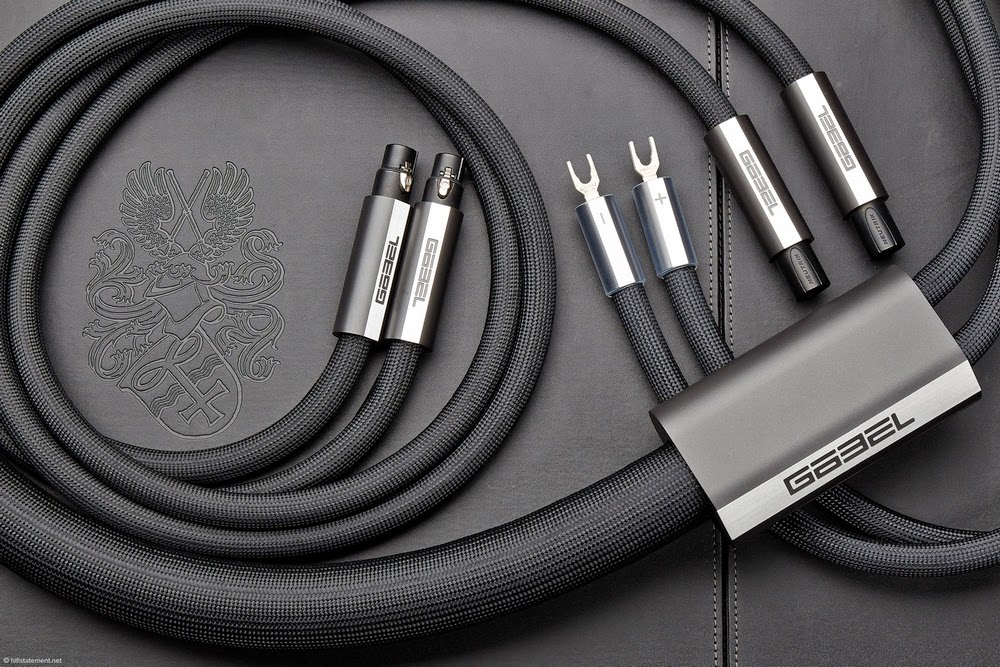
Gobel Audio Lacorde Statement cables (speaker cable $25k pair; digital cable$3500; AC cord $9,100 ea): No words can describe what Oliver Gobel’s designs have done to reshape my reference for what is possible in two-channel audio. These are simply the greatest speaker cables, digital wires and AC cords I have ever heard or have encountered. They come at price that makes them out of reach for most mere mortals. Consider yourself lucky if you are, and luckier if they form the type of synergy created here. Review in the works. [Clement Perry]


JCAT USB Cable (EUR 349 / 299 (for JPLAY customers). This is a must try for anyone into computer music. The JCAT’s neutrality lets you hear exactly what is going on in your signal chain. It simply gets out of the way and disappears – which is the highest level of praise possible for a cable. (reviewed here) (Eric Teh)

.jpg)
Klee Acoustics “Grand Illusion” Speaker Cables ($8,995/pair): These very expensive but beautifully built and sounding cables transformed my modest system into something I had no idea was possible. The openness and ease of the music was so seductive that every recording was a sonic marvel. Expensive? Yes, very much so. Incredible sounding? Yes, very much so. It made my system, which I’ve had for several years take on a completely new and MUCH better presentation that was pretty much unrecognizable. (reviewed here) (Billy Drummond)

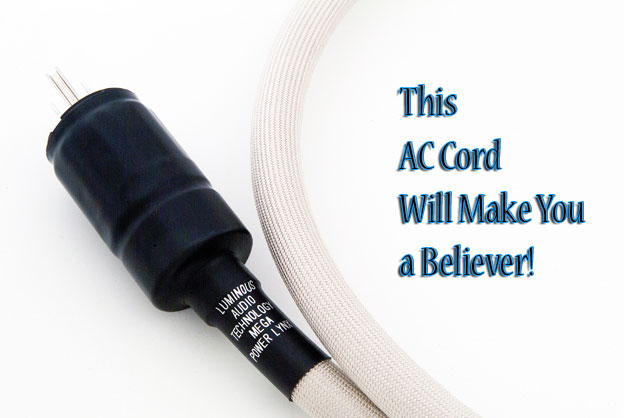
Luminous Audio Technology Mega Power Lynx AC Cord (From $649): This extremely high quality 9 gauge composite 99.7% OFC stranded copper power cable has powerful neodymium magnets built into the plug set to decrease noise and help restore proper phase alignment to the music signal. It is indeed very quiet, holographic and dynamic and in my view sits head and shoulders above many other AC power cables I have used. Highly recommended! (reviewed here) (Frank Alles)


Spiritual Audio VX-9 Power Conditioner ($2,500): The VX-9 power conditioner enhanced the performance of every component connected to it, yielding cumulative system-wide improvements: an exceptionally quiet noise floor, improved clarity, and more clearly defined sonic images. Capable of passing 2500 watts at 20amps, the conditioner ensured the full benefit of my dedicated 20amp line, and two sets of ‘Digital Source Tuning’ outlets allow the user to subtly tailor the sound of source components to his/her taste. With a simple steel chassis instead of costly milled billet, the quality was clearly on the inside where I like it – An excellent single-piece improvement for an entire system. (Greg Simmons)
Spiritual Audio AC Conditioner VX-12 ($10k):
Sweet sounding, yet articulate and as musically convincing as they come. The VX-12 is the complete opposite of uninvolving and lacking energy. “Also, says its designer Bill Glenn, the VX-12 also is the only power conditioner that allows the listener to tune his or hers digital and analog front-end with either the warm or sharp outlets.” Either way, the VX-12’s inherent qualities that impressed me the most was its intense see-through level of transparency without any loss of harmonics or dynamics. Having 12 outlets allows the VX-12 to specifically handle big rig systems where the smaller VX-6 is more affordable and perhaps applicable. (Clement Perry)

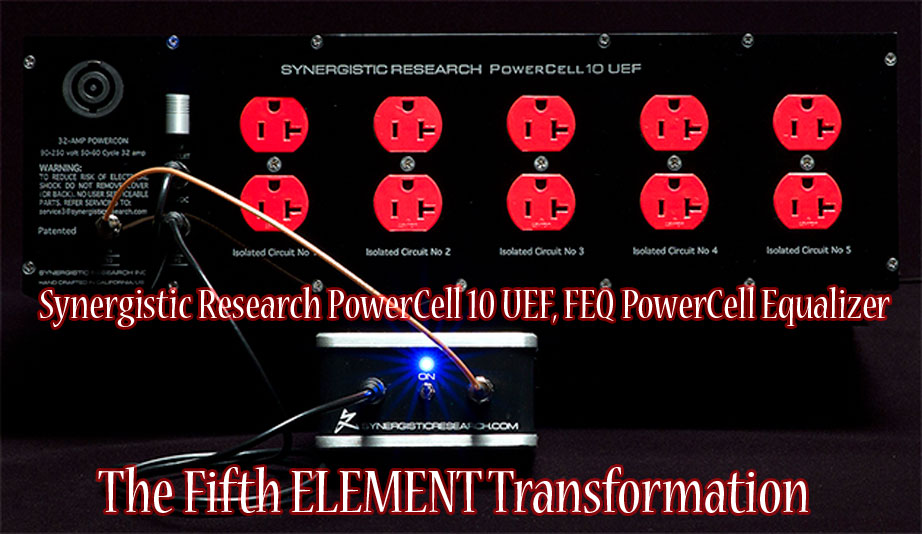
Synergistic Research PowerCell 10 UEF ($6,000) and FEQ PowerCell Equalizer ($995)
In this latest iteration of the PowerCell, the PowerCell 10 UEF, SR found a way to build upon the concept of line conditioning and took it to the next level with the implementation of the Uniform Energy Field (UEF) technology. Compared the previous model, the PC UEF, excelled in the areas of lowering the noise floor, enhancing the microdynamics, expanding the soundstage in all directions, presenting a more relaxed tonal balance, and tightening the mid and lower bass. The FEQ PowerCell Equalizer, designed to reclock the Powercell 10 UEF from the resident ac frequency of 60 kHz to a rich low frequency harmonic, showed itself as an essential musical upgrade to the PC UEF by increasing the image density and depth while providing a more natural and relaxed presentation. The PowerCell 10 UEF and FEQ PowerCell Equalizer are engineering breakthroughs that are well made, deliver on their promised performance, and have taken my system to a level I never thought possible. Together, they are my new reference. (reviewed here) (Mike Girardi)

Synergistic Research HFT (High Frequency Transducer Technology), $299/5-pack or $75/ea. and FEQ (Frequency Equalizer Technology), $995
The largest component in one’s system is the listening room yet it the one component that is commonly overlooked and misunderstood. The HFTs are tiny high frequency transducers that clean up high frequency harmonics in your listening room by cancelling the harmonic noise generated by room resonances. The FEQ is an ultra low frequency RF pulse generator that acts as a low frequency dither to overpower the ambient RFI and EMI fields. The combination of the FEQ and HFTs has made the biggest improvement in my system’s performance since I been reviewing high end audio components over the last 11 years. Considering the physical size of the HFTs and FEQ as compared to all other room acoustic enhancement devices and their comparative performance, the FEQ and HFT resides in the best in class category for room acoustic treatment. From an ergonomic and aesthetic standpoint alone they are revolutionary in the application of room acoustic enhancement. Happy was the day I removed my previous reference room acoustic treatments and replaced them with the FEQ and HFTS (and it wasn’t a secret that my family felt the same way). The combination of the FEQ and HFT is a paradigm shift in room treatment device design and delivers on its promised performance. (reviewed here) (Mike Girardi)

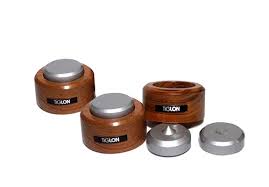
TiGlon TMZ-3 Premium Series Hybrid Insulator Set ($625.00): This was a pleasant end of the year surprise. These are elegantly made isolation devices that combine a magnesium spike with a magnesium cup which are housed in a real wood holder. When I placed them under my little OPPO CD player, the sound became transformed. The soundstage broadened, musical images became more defined and the bass became deeper and tighter. I can’t wait to try them under every component in my system. (Dave Thomas)

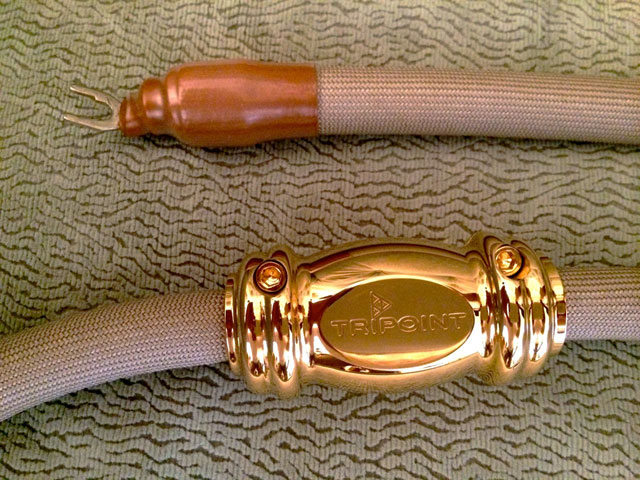
Tripoint Thor Master Reference SE Ground cable ($5,500): Obviously this presumes already having the Tripoint Troy Signature or the renown and yet personally unheard Emperor grounding devices. My Troy Signature came with the Tripoint Silver grounding wires, which I had found superior to everything I had available, but the new Thor SEs are immediately quite superior. The soundstage just blossoms with an ease and detail that I had never heard before. This improvement is of the magnitude of outfitting ones entire system with the very best interconnects and speaker wires. No EMI or RFI can get into the ground wire and add noise plus all the noise in the component is filtered and carried to earth ground. (Norm Luttbeg)
Stereo Times Masthead
Publisher/Founder
Clement Perry
Editor
Dave Thomas
Senior Editors
Frank Alles, Mike Girardi, Russell Lichter, Terry London, Moreno Mitchell, Paul Szabady, Bill Wells, Mike Wright, and Stephen Yan,
Current Contributors
David Abramson, Tim Barrall, Dave Allison, Ron Cook, Lewis Dardick, John Hoffman, Dan Secula, Don Shaulis, Greg Simmons, Eric Teh, Greg Voth, Richard Willie, Ed Van Winkle, and Rob Dockery
Site Management Clement Perry
Ad Designer: Martin Perry






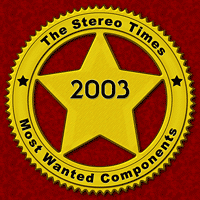

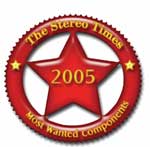
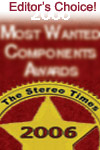


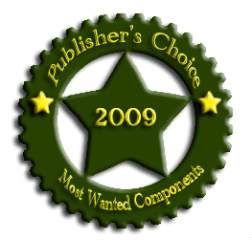
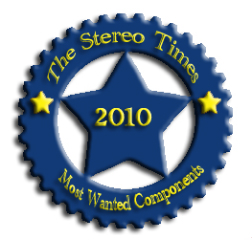
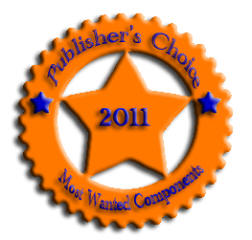
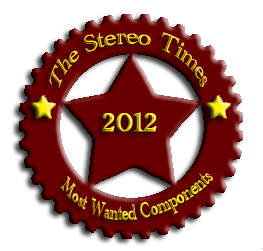



Be the first to comment on: MW2014a